Job Prickett House
Introduction
Text-to-speech Audio
This farmhouse was constructed in 1859 by Job Prickett, the great-grandson of Jacob Prickett, who originally acquired the property. The farmhouse’s design is typical of the mid 19th century, with some unique architectural features of the Federal and Greek Revival styles. It has undergone several restorations since 1974 and is now part of guided tours of the Pricketts Fort historic site. The Job Prickett House was placed on the National Register of Historic Places in 1974.
Images
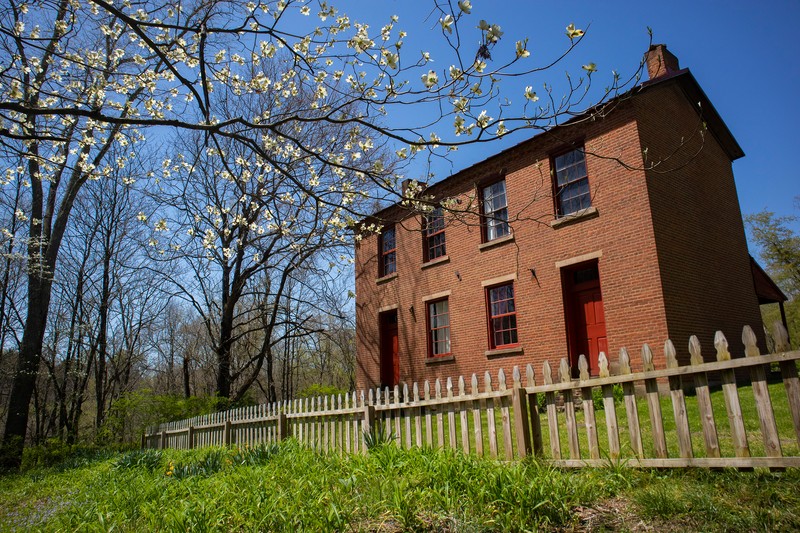
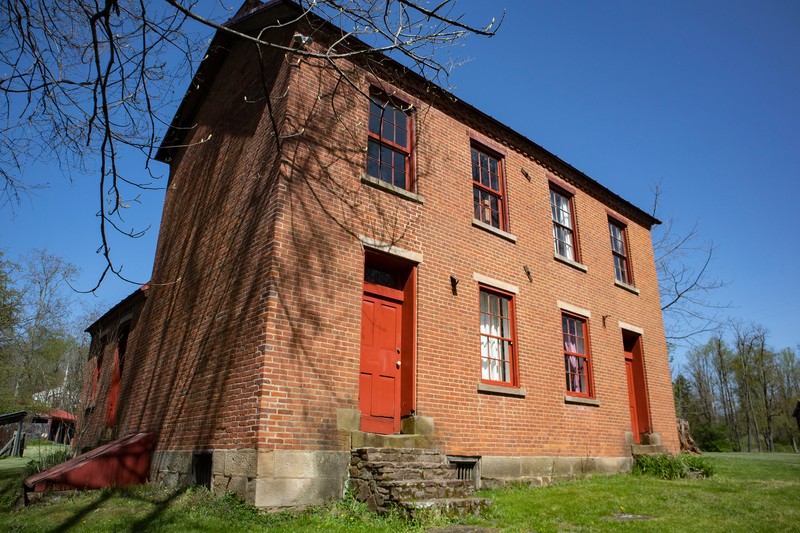
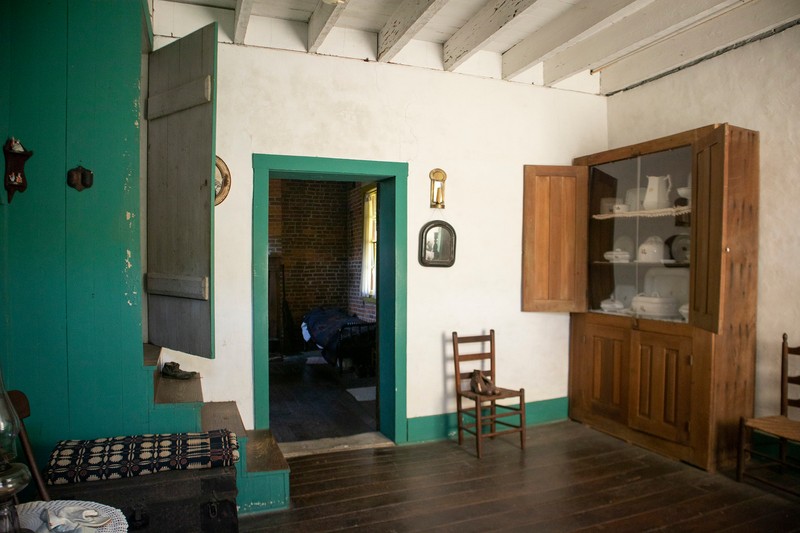
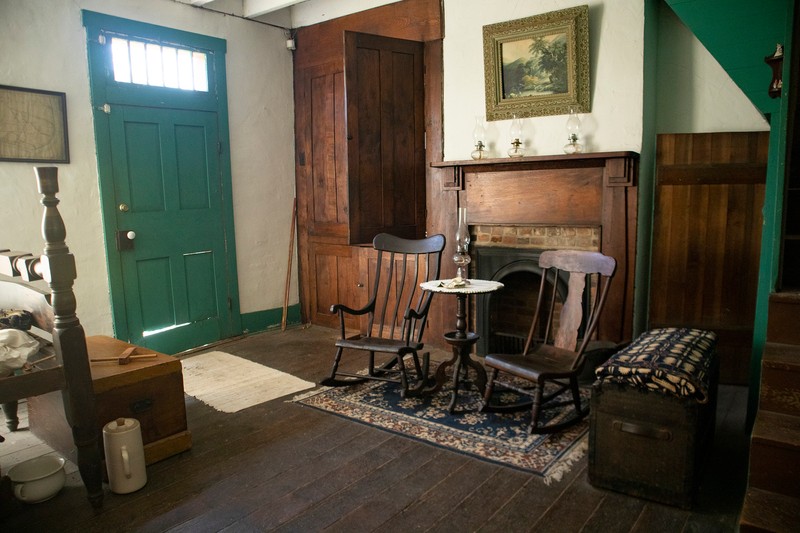
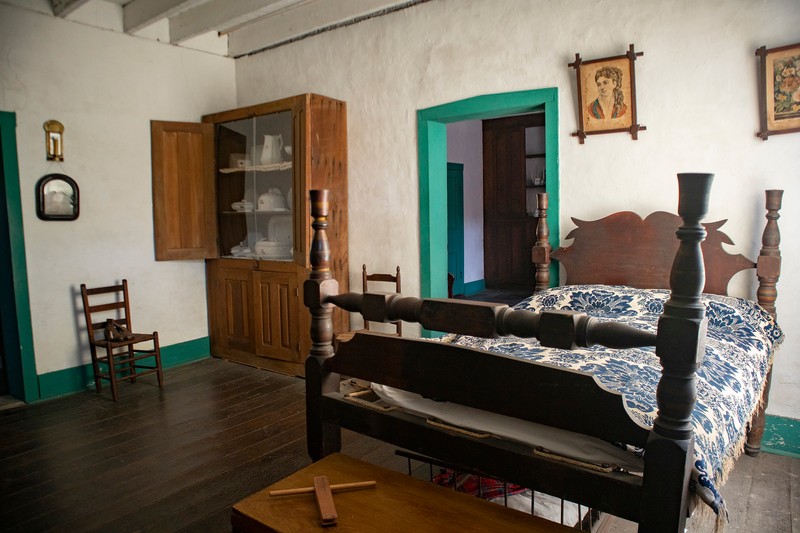
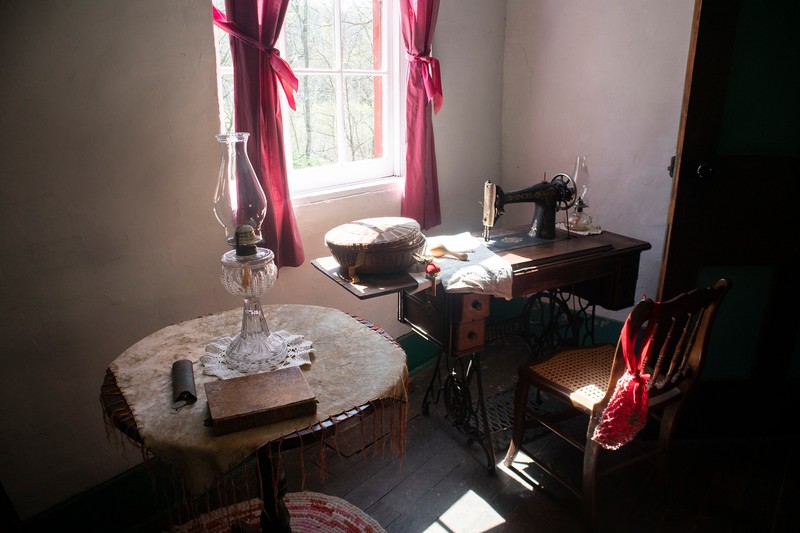
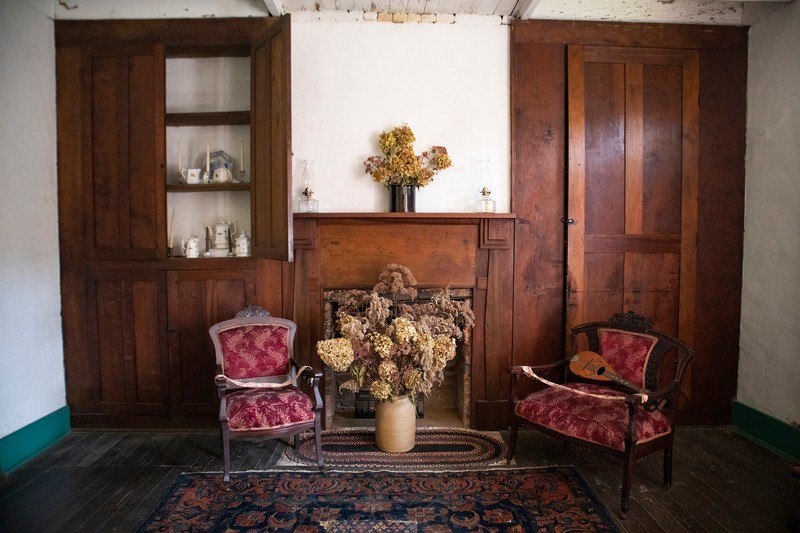
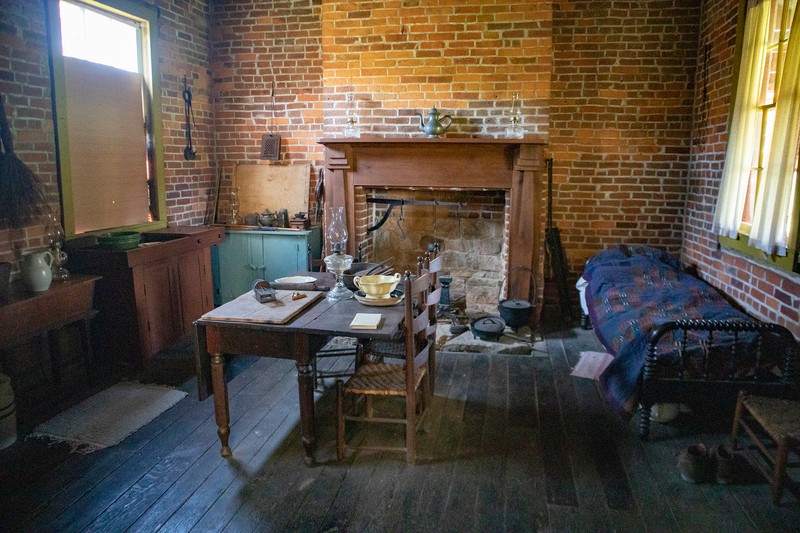
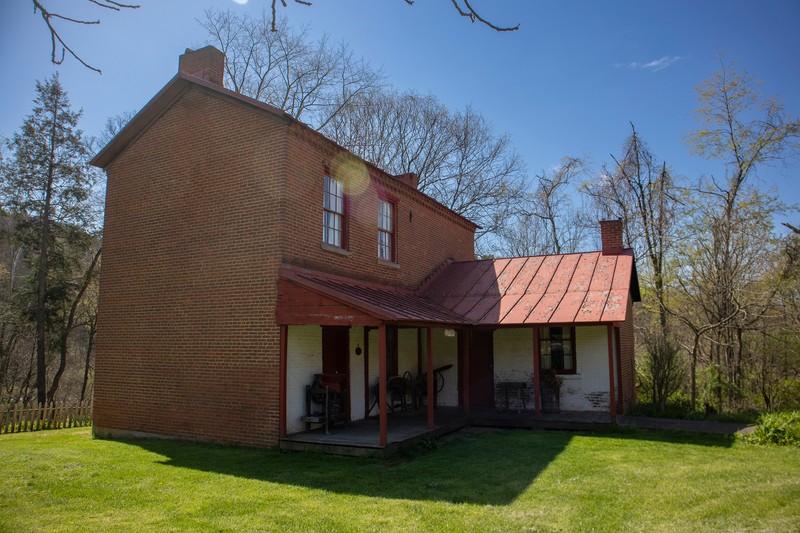
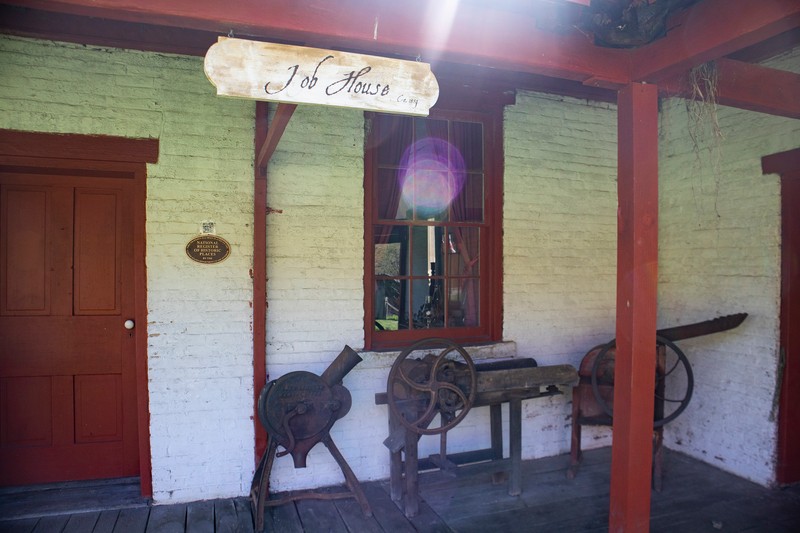
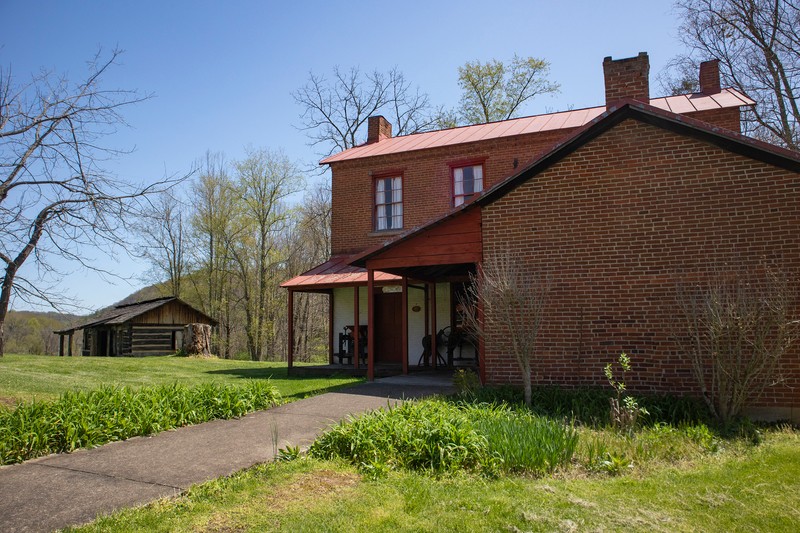
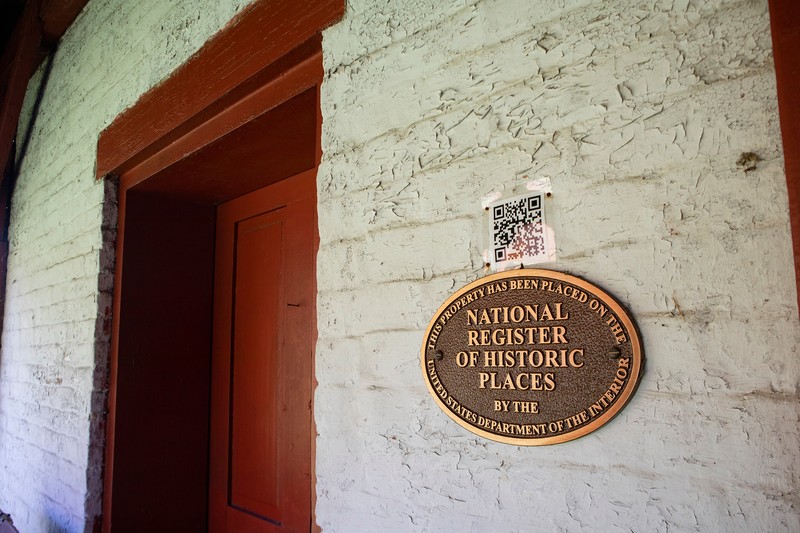
Backstory and Context
Text-to-speech Audio
The story of the Prickett family and their longevity at this property is well represented by the survival and restoration of the 1859 Job Prickett House. After Jacob Prickett acquired the property in 1772, several generations of Pricketts called this place home. In the early decades, the families lived in log homes. By the 1830s, family members began upgrading their homes by constructing brick homes, which were more durable and permanent. One of Jacob’s grandsons, Richard, was among those with a brick home about a mile and a half from the original fort. His son, Job, would go on to build the brick home that stands at the historic site today.
Job Prickett one of ten children born to Richard Prickett and Elizabeth Jolliffe. He and three of his siblings received parcels of land from their father. Job, after trading properties with his sister Jemimah, owned the property at the site of the fort, which had been dismantled around the turn of the 19th century. Job had married Louisa (pronounced Lou-eye-sa) Smith Radcliffe in 1841, and it is likely the couple and their children initially lived in a log house that remained from inside the fort. Around 1858, according to family history, Job began building the brick home right next to their log house, so close that there was just enough room to walk between the two buildings.
Job’s house was one of six “sister” houses constructed on the family property. In all, Richard Prickett, his sons John, Jacob, and Job, his daughter Jemimah, and his nephew constructed brick homes. Of the original six houses, only Job’s house and another house, which is unrecognizable due to exterior renovations, still stand. Job’s house, along with the others, was built by the families with local, shared materials. Their camaraderie is well represented by how they made the bricks for the homes. The bricks were made from clay excavated somewhere on the property, shaped by hand with a set of twelve wooden brick molds family members passed around as the homes were constructed. The stone foundation blocks are a late 18th century dressed stone, which may have come from a dismantled public building, while other stone for the foundation was purportedly quarried three-quarters of a mile from the house on the other side of Prickett’s Creek.
The Job Prickett House’s architecture reflects a typical mid 19th century farmhouse. It doesn’t strictly adhere to one architectural style, meaning the design elements reflect a mix of styles from the time period and speak to the Pricketts’ personal taste. According to Elizabeth S. Trach, author of a booklet on the Job House, the architecture “makes [Job’s] home uniquely his, and is the most important reason for saving the structure.” The house retains elements of Federalist and Greek Revival architecture. Federalist elements include the overall symmetry of the front of the house, which has two doors and four windows, as well as decorative elements like the denticulated cornice along the roof. Greek Revival elements include numerous chimneys flush with the outer wall and panel doors with transoms above them.
Inside, the floor plan is simple and functional. The main part of the house has two stories each with two rooms. Historically, the bottom floor held Job and Louisa’s bedroom doubling as an informal gathering space, and a formal parlor, which was unusual for this period. On the second floor, the boys’ room was at the top of the stairs, and the girls’ room was above the parlor. The house also had a small wing, creating an L-shaped floor plan overall, where a one-story kitchen was attached. There is little interior ornamentation, further reflecting its simplicity.
By 1861, John, Jacob, and Jemimah had finished their brick homes, but Job had not. Family history remembers Job wanting the house to be perfect, including the mortar, bricks, and appearance of construction. Louisa, however, moved the family brick house when it was still unfinished. Descendants guess she may have been impatient with Job’s perfectionism, yearned to move into a new home like her in-laws, or, because she was expecting a set of twins in the fall of 1861, was eager to have her babies born in a cleaner home. Louisa lived in the home for four years until she died of tuberculosis in 1865. The following year, Job married Rebecca McElfresh McDonald, and the couple had five children. One of Job and Rebecca’s children, Nellie, was born in 1877 and lived to be 103 years old. In a 1974 interview, she recalled that the family farm was self-sustaining, that they dug coal on the property and burned it in all the fireplaces except the kitchen, and how the B&O Railroad impacted the flow of the river and streams. Furthermore, the house remained unfinished, even after Job Prickett’s death in 1894.
The house remained in the family after Job and Rebecca’s deaths in the 1890s. Through the 1950s, several generations, as well as extended family, either owned or rented the house. Eventually, the walls were plastered, wallpaper hung, and boards placed on the ceilings to cover exposed floor joists and rafters. At the same time, parcels of land were given to various children and grandchildren, continuing the tradition of family members living on the property. The house, though, was abandoned in the 1950s. As the years went on, it suffered damage from neglect and vandalism.
In the 1960s, the U.S. Army Corps of Engineers sought to develop the land for the Opekiska Lock and Dam Project, risking its historical integrity. Irene Prickett, Job’s great-granddaughter who had lived on the property as a child, represented the family in negotiations with the Corps of Engineers. The Corps acquired the property in 1969, and leased the land to the West Virginia Department of Natural Resources to develop a state park. The history, though, was under threat at the expense of the site’s recreational opportunities. One house and several outbuildings were demolished to build the boat launch and roads, and the Corps quietly planned to demolish the Job Prickett House to build another road. Irene Prickett and the Marion County Historical Society called government officials to divert these plans. The Pricketts Fort Memorial Foundation, formed in 1970, advocated for preserving the historic site, reconstructing the fort, and restoring the Job Prickett House.
Restoring and maintaining the Job Prickett House is a constant process. In the 1970s, family oral histories were recorded and used to preserve the history of the house and property. Notably, Job’s youngest and only surviving child, Nellie Prickett Snyder, shared details of interior furnishings, decorations, outbuildings, garden and orchard locations, and daily activities of family members in the 1880s. After the site received designation on the National Register of Historic Places, the Pricketts Fort Memorial Foundation applied for government grants to receive support for the restoration of the Job Prickett House. Early renovations involved caring for the masonry, reopening the kitchen fireplace, and reconstructing unstable walls, but more work was necessary to save the house from being lost. In the 1980s, a $30,000 grant from the Department of Culture and History provided the necessary funding to replace the roof, doors, and windows and stabilize the chimney wall. Interior details and furnishings generally reflect the time in which Louisa moved the family into the house, though the parlor displays late Victorian furniture that reflects Nellie’s recollections. Presenting and interpreting the house from multiple time periods emphasizes its longevity and role in Prickett family history.
Today, the Job Prickett House is part of guided tours. It represents the continued use of the property after the fort was deconstructed and helps interpret the Prickett family genealogy. When visiting the historic site, visitors will usually first encounter the back of the house, which features a porch. The front of the house faces Pricketts Creek, and there is a small flower garden, fence, and remnants of a historic road in this area.
Cite This Entry
Curtin, Pamela. "Job Prickett House." Clio: Your Guide to History. May 31, 2022. Accessed August 20, 2025. https://theclio.com/entry/22473/tour/6
Sources
Bray, Greg. Images of America: Pricketts Fort. Charleston, SC. Arcadia Publishing, 2014.
Job Prickett House, Pricketts Fort Memorial Foundation. Accessed May 31st 2022. https://www.prickettsfort.org/job-prickett-house.html https://www.prickettsfort.org/fort.html.
Trach, Elizabeth S. The Job Prickett House: Reconstructing a Family’s Heritage. Pricketts Fort Memorial Foundation, 1995.

